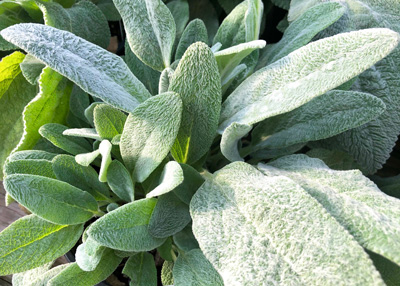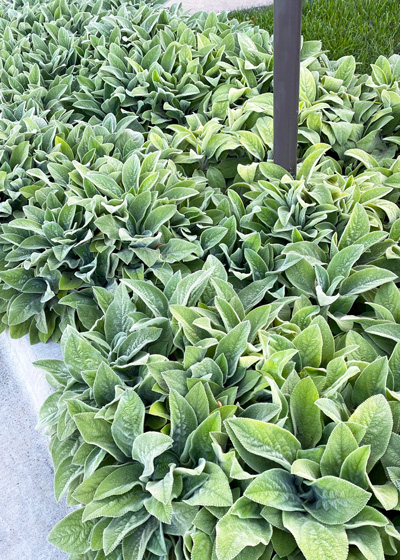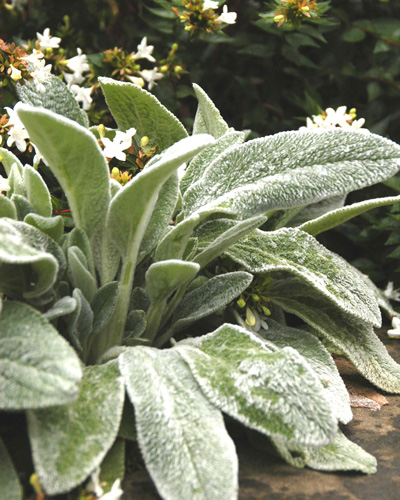Try Not to Feel It!
Smell a violet. Touch a sensitive briar and watch its leaves close. Stroke the leaves of a lamb’s ear. They’re all ways we put our senses to work in our gardens and they enrich our experiences of nurturing nature.

Let’s talk about that last one. Lamb’s ear is a great landscaping addition, but it’s one that few people have grown. Perhaps we can change that. It will be coming into nurseries in the next several weeks. Make plans now to include it in your plantings this year.
Here are the facts…
Things you’ll want to know about this fun and fine little plant.
• Common name: Lamb’s ear (for obvious reasons of its close resemblance to the look and feel of the animals’ ears)
• Scientific name: Stachys byzantina
• Native to Turkey, Armenia and Iran
• Winter-hardy to Zones 4-8
• Landscape uses: Small-area groundcover, perennial bordering plant, rock garden plant

• Mature height: 10 to 16 in.
• Mature spread by clumping: 12 to 18 in.
• Exposure: Mostly sun, but some shade in hottest part of afternoon would be good
• Soil preference: Highly organic but well drained

• Leaf color: gray-green and velvety
• Flower color: pinkish, but insignificant. It is better to trim out flower stalks as they begin to form.
• Potential problems: Flowers cause plants to lose vigor and thin out. Keep flowering stems clipped off as they develop. Plants that are in waterlogged soils can develop a crown rot.
Note: Selection ‘Helene Von Stein’ has larger leaves and better appearance through the summer.
